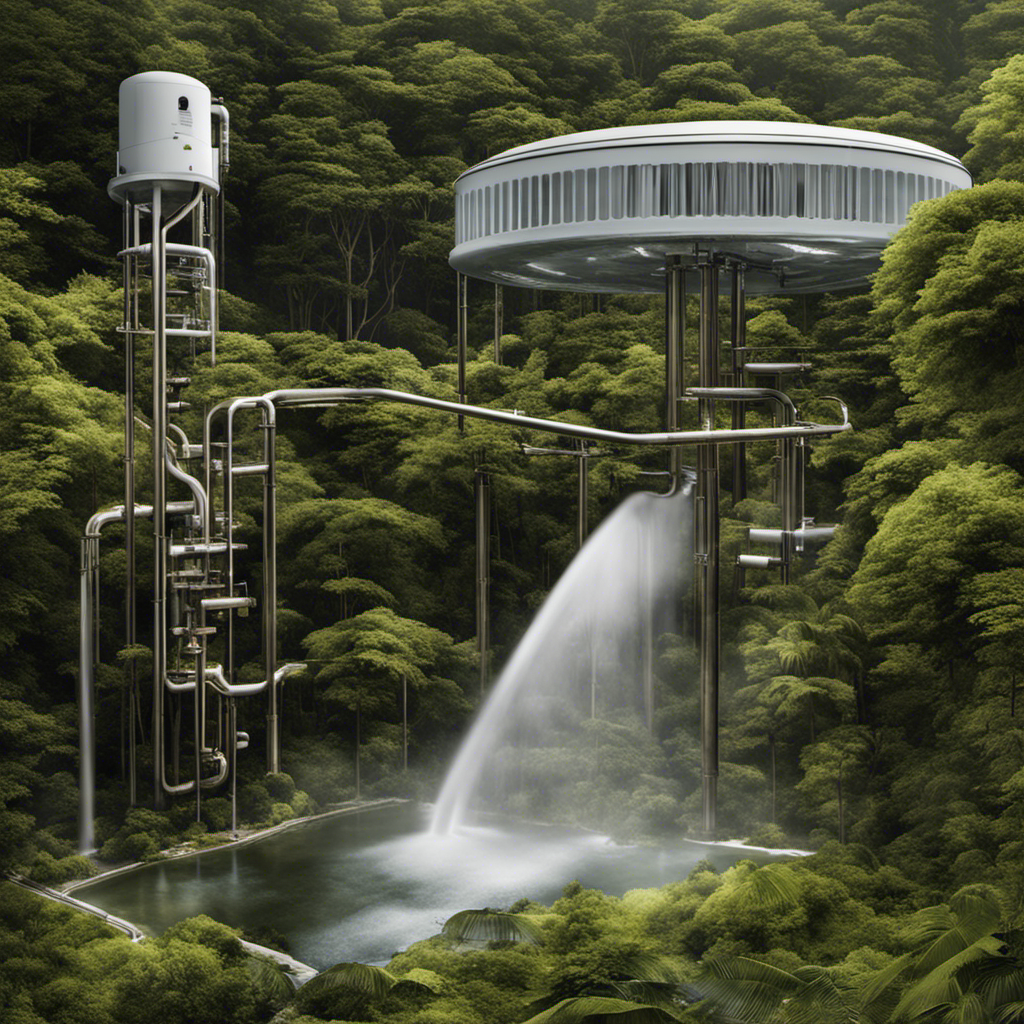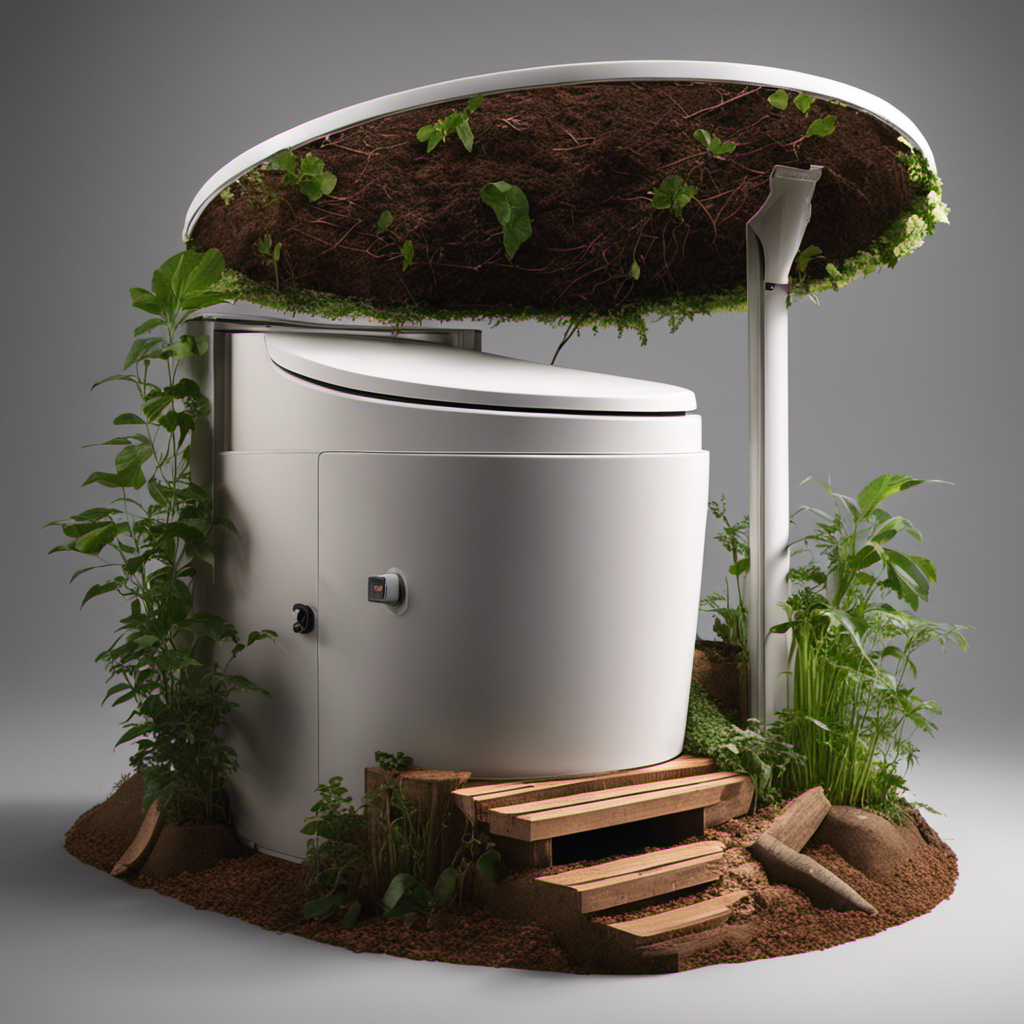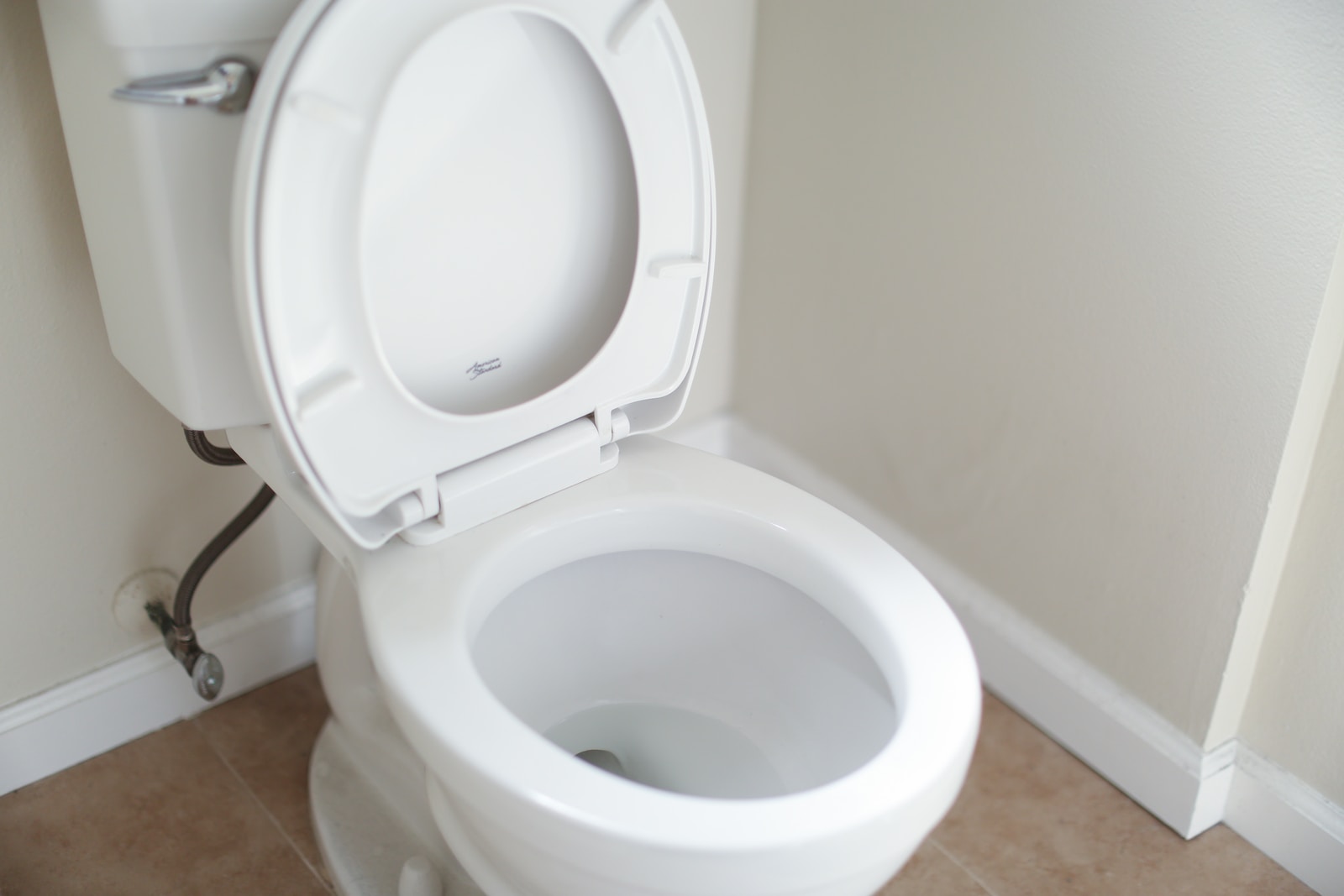Do you ever wonder where the toilet water goes after you flush? Prepare to be amazed as we take you on a journey through the intricate world of wastewater disposal.
From the moment you hit the flush handle, the toilet water embarks on a gravity-driven adventure, navigating a complex network of pipes and sewer systems. But the story doesn’t end there.
Discover the fascinating process of treatment and purification that transforms sewage into clean, reusable water. Get ready to have your misconceptions shattered and your environmental consciousness awakened.
Key Takeaways
- Flushed water goes into the sewer system for filtration and treatment.
- The treated water is released back into the environment meeting required standards.
- Water reuse decreases the demand for freshwater resources.
- Regular maintenance and proper disposal practices are crucial in preventing blockages and system damage.
The Journey From the Toilet Bowl
When you flush the toilet, the water travels through the pipes and into the sewer system.
But before it reaches that point, let’s talk about the journey from the toilet bowl.
The first thing to consider is toilet bowl hygiene. After you flush, the water swirls around the bowl, removing waste and any residue left behind. It’s important to keep the toilet bowl clean to prevent the buildup of bacteria and unpleasant odors.
Now, let’s move on to the next step in the journey – toilet water recycling. Once the water is flushed, it enters the sewer system, where it undergoes a complex process of filtration and treatment. This ensures that the water can be safely recycled and used for other purposes, such as irrigation or industrial processes.
Inside the Pipes: The Drainage System
In this discussion, we will delve into the intricate workings of the drainage system. We will focus on three key points: gravity and water flow, the waste disposal process, and maintenance and blockages.
Firstly, we will explore how gravity plays a crucial role in guiding the water through the pipes. This ensures a smooth and efficient flow. Understanding this concept is essential to comprehending the overall functioning of the drainage system.
Next, we will examine the intricate process of waste disposal and how it is managed within the system. This involves various mechanisms and technologies that ensure proper disposal and treatment of waste materials. By understanding this process, we can appreciate the importance of maintaining a well-functioning drainage system.
Lastly, we will discuss the significance of regular maintenance in preventing blockages. Blockages can disrupt the flow of water and lead to various issues, such as flooding and damage to the system. By implementing regular maintenance practices, we can ensure that the drainage system continues to function optimally.
Gravity and Water Flow
You can see how gravity affects the flow of water by observing how toilet water goes down the drain. When you flush the toilet, the water pressure from the tank pushes the water into the bowl and through the plumbing system.
Here’s how gravity plays a role in the process:
-
The force of gravity pulls the water down the drain, creating a suction effect that helps to remove waste and water from the bowl.
-
As the water flows down the drain, it moves through a series of pipes that are angled downward, allowing gravity to assist in the flow.
-
Gravity also helps to keep the water moving smoothly through the pipes, preventing any blockages or backups.
With gravity’s help, the water quickly and efficiently moves through the toilet plumbing, making way for the waste disposal process.
Waste Disposal Process
To efficiently dispose of waste, gravity pulls it down the drain, creating a suction effect that removes it from the bowl. Once the waste enters the sewer system, it undergoes a series of waste treatment methods to ensure safe disposal. These methods include primary treatment, secondary treatment, and tertiary treatment.
In primary treatment, solid waste is removed through physical processes such as settling and skimming. This helps separate the larger particles from the liquid waste. The liquid waste then moves on to secondary treatment, where bacteria and other microorganisms break down organic matter through biological processes. Finally, in tertiary treatment, the remaining impurities are removed through processes like filtration and disinfection.
Apart from traditional waste treatment methods, there are also alternative toilet systems being developed. These systems aim to reduce water usage and promote sustainable waste management. Some examples include composting toilets, which convert waste into compost, and vacuum toilets, which use air pressure to transport waste more efficiently. These alternative systems offer innovative solutions for waste disposal in the future.
| Waste Treatment Methods | Alternative Toilet Systems |
|---|---|
| Primary Treatment | Composting Toilets |
| Secondary Treatment | Vacuum Toilets |
| Tertiary Treatment |
Maintenance and Blockages
When maintaining your waste disposal system, it’s important to regularly check for blockages and address them promptly to prevent any potential issues.
Here are some maintenance tips and common blockage causes to keep in mind:
-
Maintenance Tips:
-
Use a plunger or drain snake to clear minor blockages.
-
Avoid flushing non-flushable items such as wipes, sanitary products, or paper towels.
-
Regularly clean your toilet bowl and pipes to prevent build-up.
-
Common Blockage Causes:
-
Excessive toilet paper usage.
-
Flushing foreign objects like toys or jewelry.
-
Accumulation of hair or debris in the pipes.
By following these maintenance tips and being aware of common blockage causes, you can ensure the smooth operation of your waste disposal system.
Understanding gravity and flushing mechanisms will further enhance your understanding of how the toilet water is effectively flushed away.
Understanding Gravity and Flushing Mechanisms
When it comes to understanding how a toilet flushes, it is important to consider the water flow during flushing, gravity’s role in the process, and the flushing mechanism itself.
During a flush, water flows from the tank into the bowl, creating a powerful force that removes waste.
Gravity plays a crucial role in this process, as it pulls the water and waste down the drain and out of the toilet.
The flushing mechanism, which typically consists of a flapper and a flush valve, is responsible for initiating the flow of water and controlling the timing and intensity of the flush.
Water Flow During Flushing
You’ll notice that the water in the toilet bowl is quickly and forcefully sucked down into the drain when you flush. This process is essential for maintaining proper hygiene and sanitation in your bathroom.
Here are some key points to consider about water flow during flushing:
-
Toilet water recycling: Many modern toilets are equipped with systems that allow for water recycling. This means that the water you flush down the drain can be reused for purposes like irrigation or cleaning. This helps in conserving water and reducing overall water consumption.
-
Water conservation measures: Toilets are designed to use water efficiently. Low-flow toilets, for example, utilize less water per flush compared to traditional toilets. Dual-flush toilets provide the option to use a reduced amount of water for liquid waste and a higher amount for solid waste.
-
Efficient flushing mechanisms: The forceful flow of water during flushing is achieved through the design of the toilet’s trapway and siphon jet. These components create a strong suction effect, rapidly pulling the water and waste down the drain.
Understanding the water flow during flushing is crucial in comprehending gravity’s role in the flushing process and how it contributes to the efficient removal of waste.
Gravity’s Role in Flushing
In the previous section, we discussed how water flows during the flushing process. Now, let’s explore the role of gravity in flushing and how it is influenced by toilet design and water pressure.
When you press the flush lever, the water in the toilet tank rushes into the bowl. This sudden influx of water creates a surge of pressure. Due to the force of gravity, the water is then propelled down the trapway and into the drainpipe, carrying away waste and debris.
To ensure efficient flushing, toilet designers consider factors such as trapway size, bowl shape, and water flow rate. These elements work together to optimize the gravitational force and create a strong, effective flush.
Additionally, water pressure plays a crucial role in flushing. Higher water pressure allows for a more forceful flush, ensuring proper waste removal. On the other hand, low water pressure can result in incomplete flushing and potential clogs.
To summarize, gravity, combined with the right toilet design and adequate water pressure, is responsible for the smooth and efficient removal of waste during flushing.
Now, let’s take a closer look at the different toilet designs and their impact on flushing performance.
| Toilet Design | Description | Flushing Performance |
|---|---|---|
| Siphonic | Utilizes a siphoning action to create a powerful flush. The trapway is concealed, enhancing the aesthetics. | Excellent |
| Washdown | Relies on a strong jet of water to push waste down the trapway. The trapway is visible, making it easier to clean. | Good |
| Pressure-assisted | Uses compressed air or water to create an enhanced flushing force. Ideal for commercial settings or households with heavy use. | Excellent |
Flushing Mechanism Explained
To understand how the flushing mechanism works, imagine the toilet as a system that relies on gravity and pressure to effectively remove waste. Here’s how it all comes together:
-
Gravity-Assisted Flushing: Traditional toilets use the force of gravity to create a powerful flush. When you press the handle, a chain lifts a flapper valve, allowing water to rush from the tank into the bowl. The weight of the water creates a siphon, pulling waste down the drain.
-
Dual Flush Technology: In recent years, toilet technology advancements have introduced dual flush toilets. These toilets give you the option to choose between a full flush for solid waste and a half flush for liquid waste, reducing water usage.
-
Water Conservation Methods: With increasing concerns about water scarcity, toilets now incorporate water conservation methods. Some toilets use low-flow technology, limiting the amount of water used per flush. Others have adjustable flush options, allowing you to control the water volume based on your needs.
Thanks to these advancements, toilets have become more efficient, eco-friendly, and water-saving.
The Role of Sewer Systems in Waste Disposal
When you flush the toilet, the sewer system carries the waste away for proper disposal. The sewer system plays a crucial role in maintaining public health and sanitation. To ensure its proper functioning, regular sewer maintenance is essential. This includes inspecting and cleaning the sewer lines to prevent blockages and backups. If not adequately maintained, the sewer system can become clogged with debris and cause unpleasant odors and health hazards.
Once the waste enters the sewer system, it undergoes wastewater treatment. This process involves removing contaminants and treating the water before it is released back into the environment. Wastewater treatment plants use various methods such as filtration, sedimentation, and disinfection to ensure that the wastewater is safe for the ecosystem.
Proper sewer maintenance and wastewater treatment are vital to protect human health and the environment.
Treatment and Purification: From Sewage to Clean Water
Once the waste enters the sewer system, it undergoes a series of treatment processes to transform it into clean and safe water for the environment. The treatment methods used are designed to remove impurities and improve water quality.
Here’s a breakdown of the steps involved:
-
Primary treatment: This process involves the removal of large solids through physical mechanisms such as sedimentation and screening.
-
Secondary treatment: In this step, biological processes are used to break down organic matter by introducing microorganisms that consume the waste.
-
Tertiary treatment: This final stage is aimed at further purifying the water by removing any remaining pollutants through processes like filtration and disinfection.
Each treatment method plays a crucial role in ensuring that the water released back into the environment meets the required water quality standards.
Environmental Impact and Conservation Efforts
Conservation efforts are essential in mitigating the environmental impact of sewage treatment processes. To ensure environmental sustainability and water conservation, various measures can be implemented. One approach is the use of advanced technologies that minimize energy consumption and reduce greenhouse gas emissions. Another strategy involves the reuse and recycling of treated wastewater for irrigation or industrial purposes. Additionally, implementing water-saving practices such as low-flow fixtures and rainwater harvesting systems can further reduce water consumption in sewage treatment facilities. The following table provides a visual representation of these conservation efforts:
| Conservation Measures | Environmental Impact Mitigated |
|---|---|
| Advanced Technologies | Reduced energy consumption and greenhouse gas emissions |
| Water Reuse | Decreased demand for freshwater resources |
| Water-Saving Practices | Reduced water consumption in treatment facilities |
Common Misconceptions About Toilet Water Disposal
One common misconception about disposing of toilet water is that it goes directly into the environment without any treatment. However, this is not the case. In fact, there are various methods for toilet water disposal that aim to minimize the environmental impact and conserve resources.
Here are three alternative waste disposal methods that you may not be aware of:
-
Toilet water recycling: This process involves treating and purifying toilet water so that it can be reused for non-potable purposes, such as flushing toilets or irrigating plants. Recycling toilet water not only reduces the strain on freshwater resources but also helps to conserve energy and reduce carbon emissions.
-
Composting toilets: These innovative toilets use a natural process called composting to break down human waste into nutrient-rich compost. The compost can then be used as a fertilizer for plants, eliminating the need for chemical fertilizers that can harm the environment.
-
Septic systems: In areas without access to a centralized sewage system, septic systems are commonly used to treat and dispose of toilet water. These systems use a combination of bacteria and natural processes to break down and treat the waste, preventing harmful pollutants from entering the environment.
Conclusion
Congratulations! You’ve gained a comprehensive understanding of where toilet water goes and the intricate journey it takes.
From the moment you flush, the water swiftly travels through a network of pipes, propelled by gravity and the flushing mechanism.
It then enters the sewer system, where it joins other waste for disposal.
Through a rigorous treatment and purification process, this water is transformed into clean, usable water.
It’s amazing how this seemingly simple act has a significant impact on our environment.
So, next time you flush, remember the incredible transformation happening beneath the surface, turning waste into a precious resource.










